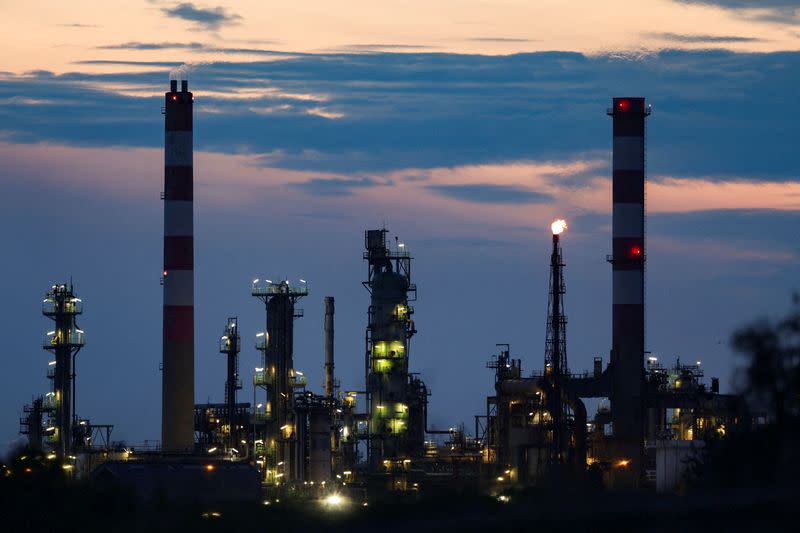Oil rises 1% as Fed rate cut optimism offsets demand fears

By Arathy Somasekhar
HOUSTON (Reuters) -Oil prices climbed 1% on Wednesday, rebounding from four-month lows, as hopes of an interest rate cut by the U.S. Federal Reserve in September outweighed demand concern after data showed builds in U.S. crude and fuel stocks.
Brent crude futures settled 89 cents higher, or 1.2%, at $78.41 a barrel, while U.S. West Texas Intermediate crude futures climbed 82 cents, or 1.1%, to $74.07.
U.S. crude stocks jumped by 1.2 million barrels in the week to May 31, compared with analysts' estimates for a draw of 2.3 million barrels, data from the U.S. Energy Information Administration showed. [EIA/S]
However, the build was below the American Petroleum Institute's reading on Tuesday of an increase of more than 4 million barrels. [API/S]
Gasoline inventories rose by 2.1 million barrels versus expectations for an increase of 2 million barrels, adding to demand concerns as the week reflected fuel usage around the Memorial Day holiday, which is traditionally viewed as the start of the U.S. summer driving season
Distillate stocks rose by 3.2 million barrels compared with estimates of an increase of 2.5 million, EIA data showed.
Meanwhile, the U.S. Federal Reserve will cut its key interest rate in September and once more this year, according to a majority of forecasters in a Reuters poll.
Traders now see a nearly 69% chance of a September rate reduction, according to the CME's FedWatch tool. Expectations had hovered around 50% last week.
"Data outside of the oil world was sufficiently weak that it's going to give cover to the Fed to finally cut rates and spur some growth," said John Kilduff, partner at Again Capital.
Lower interest rates decrease the cost of borrowing, which can incentivize economic activity and boost oil demand.
U.S. stock indexes also climbed on Wednesday, as investors strengthened bets for an earlier-than-expected start to the Federal Reserve's policy easing cycle.
Both contracts have fallen for five straight sessions, and declined more than 1% on Tuesday to their lowest settlement levels since early February.
The slide followed news from the Organization of the Petroleum Exporting Countries (OPEC) and its allies, a group known as OPEC+, of plans to increase supply from the fourth quarter despite recent signs of weakening demand growth.
"The comments from OPEC+ were a may or could, it's not definitive and if prices are in the low $70s, I don't see OPEC raising production," said Dennis Kissler, senior vice president of trading at BOK Financial.
Saudi Arabia's energy minister, Prince Abdulaziz bin Salman, has said OPEC+ would pause the unwinding of the cuts or reverse them if demand wasn't strong enough to absorb the barrels.
The U.S. could hasten the rate at which it replenishes the country's Strategic Petroleum Reserve, Energy Secretary Jennifer Granholm told Reuters on Tuesday, adding that she believes the global oil market is well supplied.
Weighing on prices, however, was a cut, the first in five months, in Saudi Arabia' official selling price for its flagship Arab Light crude oil to Asia.
The price reduction for Asia underscores the pressure faced by OPEC producers as non-OPEC supply continues to grow and demand concerns.
(Reporting by Deep Kaushik Vakil and Ahmad GhaddarAdditional reporting by Florence Tan and Emily Chow in SingaporeEditing by David Goodman, Paul Simao, Josie Kao and Cynthia Osterman)

 Yahoo Finance
Yahoo Finance 